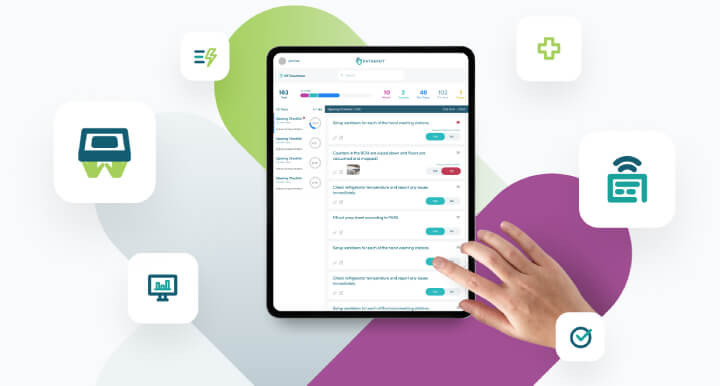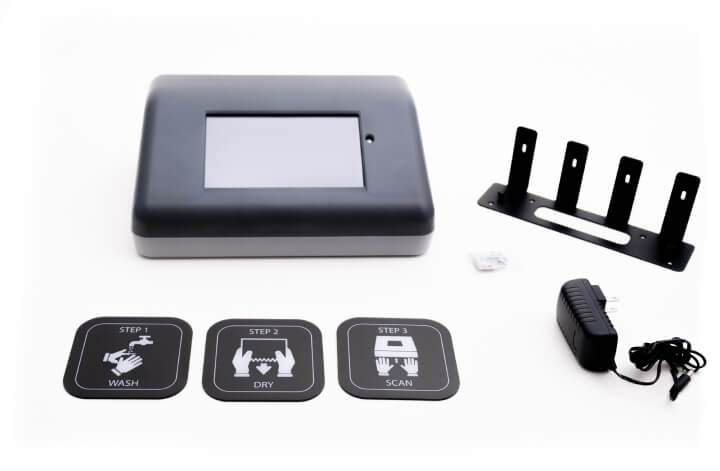Handwashing Sensors Elevate Hygiene Standards in Fast Food Chains
Insights | 28-03-2024 | By Robin Mitchell

Key Things to Know:
- Smart sensors like PathSpot's Handscanner are enhancing hygiene practices in the food industry, ensuring employees adhere to high cleanliness standards.
- These technologies have demonstrated a significant impact, with installations leading to a 110% increase in handwashing compliance and reducing contamination rates by up to 75% within months.
- PathSpot's data analytics capabilities empower businesses with real-time handwashing data, enabling the setting of custom goals and fostering a culture of safety and compliance.
- The potential applications of such hygiene monitoring technologies extend beyond the food industry, offering benefits in healthcare, education, and public facilities to ensure a safer environment.
When dealing with food, it is essential that employees maintain a high degree of hygiene and cleanliness, but while the vast majority do adhere to such standards, there will be those that do not. To prevent these employees from spreading potential illnesses, smart sensors are starting to be integrated into fast food restaurant that can check and ensure that employees wash their hands correctly. What challenges does poor hygiene introduce, how do the sensors work, and how could such sensors be used in other industries?
What challenges does poor hygiene introduce in the food industry?
Regardless of whether an employee works for a fast-food chain, a local restaurant, or a large-scale producer of the nation’s most popular snacks, a high standard of hygiene is a must, and there are countless health and safety laws that set out clear guidance on best practices. Anyone who works in these industries who doesn’t follow these guidelines will not only give customers an extremely unpleasant experience but can risk transmitting diseases.
Making matters worse, customers that have discovered poor hygiene practices (whether it's something that has been found in their food or an illness that they can trace) may request compensation, sue the company responsible, or worse, use social media to start a campaign of public embarrassment. Any of these actions can result in irreparable harm, impacting sales in the long run.
Controlling the hygiene of worksurfaces and areas can be achieved with the use of specialised staff, third-party operators, and surveillance equipment. Furthermore, surfaces can be tested daily to ensure that all laws are being complied with.
But when it comes to personal hygiene, testing for this is a lot more complicated. There are no sprays or detectors on the market that can instantly detect if hands have been improperly washed, and installing cameras in bathrooms to watch employees is likely illegal.
Expecting employees to test their hands using swabs will also likely receive backlash, and considering that such tests are expensive to do, employees could very easily wash their hands before a test, only to not bother for the rest of the day. Finally, there are plenty of other activities that don’t involved bathrooms that can require hands to be cleaned, including cleaning, lunch breaks, and general activities outside food production areas.
Lie detector device can check if hands have been washed
Recognising the challenges faced by fast food chains and restaurants, a New York startup called PathSpot has developed a new smart device that can detect if an employee hasn’t washed their hands after using the bathroom. Instead of relying on sensors found inside the bathroom itself, the device can be mounted outside of the bathroom and scan the user's hands to determine their cleanliness.
PathSpot's Handscanner technology not only ensures that employees adhere to hygiene standards but also brings about a measurable impact in enhancing workplace sanitation practices. With the Handscanner's instant detection capabilities, businesses have seen a 110% increase in handwashing compliance to FDA recommendations within just three months of installation. This significant improvement in hygiene practices contributes to reducing contamination rates by up to 75% in two months, showcasing the tangible benefits of integrating smart hygiene solutions in the food industry.
The device, called the Handscanner, has already been used in well over 10,000 locations worldwide, and is demonstrating its ability to improve hygiene. In order to use the sensor, employees place their hands into the scanner for top-side scanning of the hands, then flip their hands to scan their palms.

How the Handscanner Works to Detect Contaminants
By using LEDs as a strong source of light, fluorescence can be used to identify any remaining contaminants, and the system only requires two seconds to produce a result. According to the startup, the same technology has already been used in hospital environments where hygiene is critical.
While the sensor is able to detect the presence of contaminants, it cannot reliably identify what those contaminants are. However, considering that the contaminants it detects are strongly related to common illnesses such as cold, flu, and norovirus, any detection made caries a significant risk if ignored.
However, what really makes the system beneficial for the food industry is that all scans are linked to employee codes, meaning that not only do employees have to use the machine, but if they fail, they will be logged as failing. This means that those who do not go back and wash their hands as instructed will be caught, thus introducing a degree of self-responsibility.
The advanced data analytics capabilities of the PathSpot system offer businesses a comprehensive overview of handwashing trends, enabling the setting of custom goals aligned with CDC and FDA guidelines. By providing real-time handwashing data, PathSpot empowers managers and team members alike to track and improve hand hygiene practices effectively, fostering a culture of safety and compliance that extends beyond the food industry.
Could such sensors be used in other industries?
Having such sensors present in the food production process not only helps to protect businesses, but also helps to improve confidence in customers that properly hygiene practices have been followed. However, there are plenty of other areas where such scanners can be used, making them far more valuable than they first seem.
One such potential application for these sensors is those that work in dirty and messy industries (such as oil extraction, chemical processing, and electronics manufacturing). While those working in these industries do not deal with food given to customers, they still have to interact with the public, as well as eating their own lunch. Thus, these sensors could be used to prevent the spread of contamination from such industries.
Another potential application for such sensors is for use in public spaces. If installed into public toilets, it could very well be used as a tool to help the public identify if they have washed their hands properly. Considering that the world has just come out of a large pandemic, such tools would allow for fast identification of proper hygiene practices, thus helping to reduce the spread of future diseases.
While it may seem invasive to have such scanners, it is important to remember the consequences that consumers face when eating contaminated food. But to really seal the argument, simply ask yourself the question “would you be ok with a fast-food employing going to the toilet, not washing their hands, and then making your burger”?
PathSpot's instant detection technology is not limited to the food industry; its application can extend to various sectors where hygiene is paramount. The system's ability to provide instant feedback on the cleanliness of hands makes it a versatile tool for industries such as healthcare, education, and public facilities, ensuring a safer environment for both employees and the general public.

